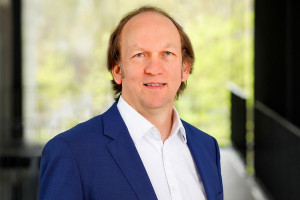Prof Dr Matthias Gunzer heads the Biospectroscopy department and Biofluorescence research group at ISAS. He is Director of the Institute of Experimental Immunology and Imaging at the University Hospital Essen. Gunzer has been holding a professorship at the University of Duisburg-Essen since 2011.
Gunzer’s research focuses on the biology of murine and human neutrophils in all aspects. He and his team develop new animal models, as well as novel microscopy tools for high throughput analyses of human neutrophils and, in collaboration with other research groups at ISAS, the molecular analysis of few cells from biological tissues.
After having studied biochemistry at the Julius-Maximilians-Universität of Würzburg and Witten/Herdecke University, Gunzer started his PhD at the Institute of Immunology under the direction of Kurt Zänker (Witten/Herdecke). Working in the team of Peter Friedl, he gained his first experience with the importance of immune cell migration and cell-cell communication. During that time, he focused on T cells, B cells and dendritic cells, but already with a keen view on neutrophils. The immunological synapse was central to Gunzer’s research as a postdoc at the University of Münster in Stephan Grabbe’s laboratory. It continued to be an important aspect of his work as a junior research group leader at the Helmholtz Centre for Infection Research in Braunschweig.
As a next step in his career, the married father of three worked as an assistant professor of molecular immunology with Burkhart Schraven at Otto von Guericke University Magdeburg. It was during that time that Gunzer and his colleagues developed the catchup mouse model. In 2011, he accepted an appointment at the University of Duisburg-Essen to found and lead the Institute of Experimental Immunology and Imaging.
The immunologist is enthusiastic about science communication. During the Covid-19 pandemic, Gunzer gave public talks about the importance of immunisation and the underlying mechanisms in the human body. He has also been giving the broad public an insight into his research, by actively participating in and encouraging the exchange about animal models and experiments.
